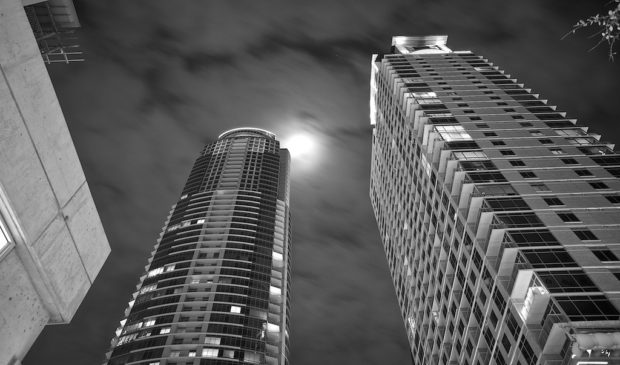Newsletter Signup
The Austin Monitor thanks its sponsors. Become one.
Most Popular Stories
- HUD cuts could endanger portion of more than $15M in federal housing funds
- Plans to demolish Highland Park home with links to Commodore Perry faces backlash from neighbors
- Watson warns of Austin’s ‘budget asteroids’ in speech to real estate council
- Prompted by convention center controversy, Council seeks changes to public art program
- Amid ongoing measles concerns, Austin ISD’s vaccination rate is below target for its youngest students
-
Discover News By District

Notley/Monitor Poll: Lack of affordability tops list of Austin’s most pressing issues
Tuesday, July 12, 2022 by Emma Freer
Austinites across demographic groups and the political spectrum find common ground when identifying the city’s most pressing issue.
Nearly 60 percent chose lack of affordability, according to a June survey of 507 likely voters commissioned by Notley and conducted by national pollster Change Research for the Austin Monitor.
Housing costs are among many factors contributing to affordability. Between May 2021 and May 2022, the average home sale price in the city rose 18 percent to $667,000, and the average monthly rent in the Austin area rose 13.6 percent to $1,673, according to the latest market reports from the Austin Board of Realtors and ApartmentData.com.
An even greater share of younger residents aged 18-34 (68 percent), Hispanic voters (67 percent) and Democrats (65 percent) identified lack of affordability as the city’s most pressing problem.
Republican respondents were less likely to agree, with 44 percent identifying public safety as the city’s biggest problem, followed by lack of affordability (34 percent), homelessness (8 percent), traffic congestion (8 percent), climate change (4 percent), and quality of city services (1 percent).
The Austin Police Department continues to contend with staffing shortages – exacerbated by rising housing costs and changing attitudes toward law enforcement – and increased oversight, including the temporary suspension of its cadet academy and grand jury indictments of 19 officers who used beanbag rounds on protesters during summer 2020.
But crime is on the downswing in Austin. Comparing January through May 2022 and the same time period in 2021, crimes against persons (including murder, rape and aggravated assault) and crimes against property (including robbery, arson and auto theft) decreased 4 percent and 9 percent, respectively, according to the latest available chief’s monthly report.
In addition to feeling priced out of Austin, 55 percent of survey respondents feel they are getting “a below average or bad value for their dollar,” according to a Change Research analysis of the results.
When it comes to transportation, survey respondents said Austin’s biggest challenges are not enough buses or trains (45 percent) and not enough roads or highways (37 percent).
Traffic congestion is a problem in Austin, where commuters wasted 41 hours in traffic in 2020, compared to an average of 24 hours in other large urban areas, according to the 2021 Urban Mobility Report by the Texas A&M Transportation Institute. But the survey data reveal age and political divides when it comes to possible solutions.
Voters under 35 identified the need for public transportation (54 percent) and greener options like bike lanes (39 percent) as the city’s most pressing transportation issues. Voters over 65, on the other hand, believe there’s a need for more roads and highways (44 percent).
Similarly, a majority of Democrats (56 percent) want more buses and trains, while the same share of Republicans want more roads and highways.
When it comes to the environment, survey respondents see extreme weather events (38 percent) and persistent drought (37 percent) as the biggest threats – with good reason.
May and June were Austin’s hottest on record, as reported by the Austin American-Statesman. The city entered the first stage of its drought response plan on June 6 after the combined water storage level in lakes Travis and Buchanan dropped below the 1.4 million acre-feet threshold.
A combination of low rainfall and record-breaking temperatures in the Austin-San Antonio region “puts additional strain on water resources, and as a result drought has continued to expand in coverage and worsen in many areas,” according to the National Weather Service.
More recently, the Electric Reliability Council of Texas, or ERCOT, which manages the state’s electrical grid, issued an alert for possible rolling blackouts and asked residents to voluntarily conserve electricity on Monday. Excessive heat warnings and heat advisories remain in effect throughout the Austin-San Antonio region through Tuesday.
In a poll commissioned by Notley for the Austin Monitor, Change Research surveyed 507 likely voters in Austin, Texas, from June 24-29, 2022. The modeled margin of error for the survey is 4.7 percent, which uses effective sample sizes that adjust for the design effect of weighting. Complete survey results and methodology can be found here.
Photo made available through a Creative Commons license.
The Austin Monitor’s work is made possible by donations from the community. Though our reporting covers donors from time to time, we are careful to keep business and editorial efforts separate while maintaining transparency. A complete list of donors is available here, and our code of ethics is explained here.
You're a community leader
And we’re honored you look to us for serious, in-depth news. You know a strong community needs local and dedicated watchdog reporting. We’re here for you and that won’t change. Now will you take the powerful next step and support our nonprofit news organization?



